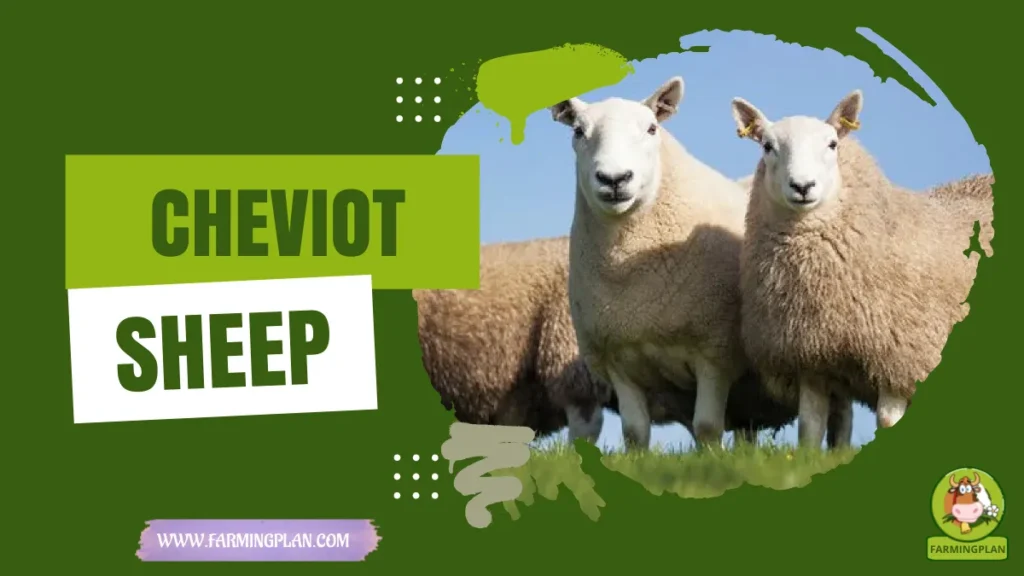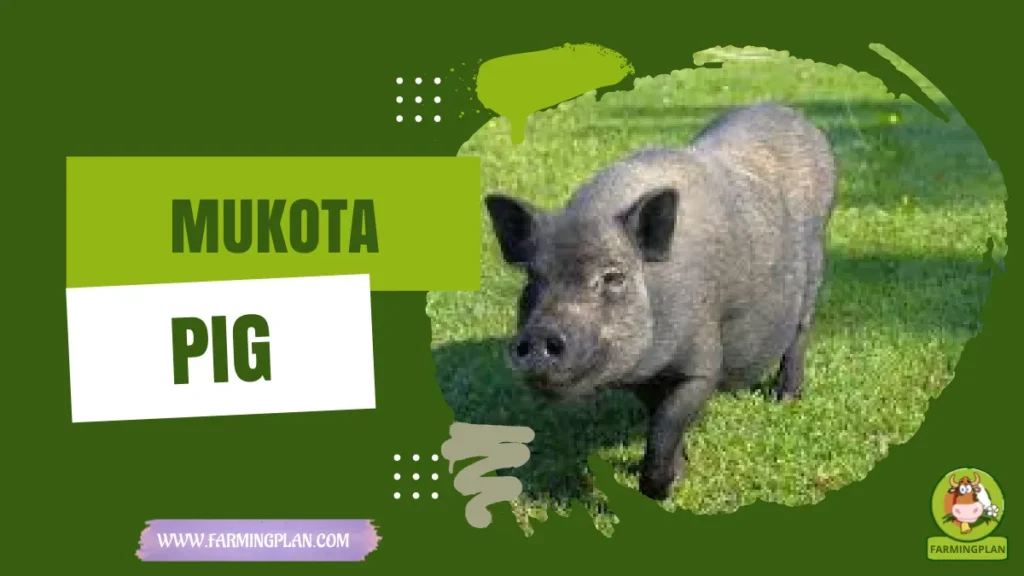If you’re after a hardy sheep breed that thrives in tough terrain and produces top-quality wool, the Cheviot Sheep is a standout choice. With their distinctive white faces, springy fleece, and lively personalities, Cheviots have won over both commercial producers and small-scale farmers like me. Originating in the rugged Cheviot Hills along the English-Scottish border, they’ve spread across North America and Australia, earning a reputation for resilience, excellent meat, and wool quality. In this quick guide, I’ll share what I’ve learned raising Cheviots—covering their history, care, feeding, and behavior—so whether you’re a breeder, hobbyist, or just curious, you’ll get the essentials.

History & Origin of Cheviot Sheep
Cheviot Sheep hail from the Cheviot Hills, a rugged range that straddles the border of Scotland and England. Named after these hills, the breed first appeared around the 14th century. According to records, John Sinclair was one of the early promoters of the breed in the late 18th century, helping establish it as a distinct type of British breed sheep.

There are two major strains today: the Border Cheviot, known in the U.K. as just Cheviot, and the North Country Cheviot, a larger variant developed through selective breeding. The North Country Cheviot Sheep Society and the American Cheviot Sheep Society have played major roles in breed preservation and improvement worldwide. Cheviots were first imported to North America in the 1800s and later spread to Southern Australia, where they adapted well to dry, hilly pastures. Despite evolving in different environments, both strains maintain the breed’s reputation for hardiness and versatility.
Read More: Suffolk Sheep: The First British Breed
Characteristics of Cheviot Sheep
Cheviots are medium-sized, white-faced sheep with clean, wool-free heads and legs. Their upright ears and lively eyes give them a sharp, intelligent look. They’ve got a well-proportioned frame and produce high-quality medium wool.

The wool is known for its helical crimp—a unique spiral structure that makes the Cheviot wool springy and highly sought after. It’s great for making yarn, wool roving, and fabric, with a grading of 56–50s quality by the British Wool Marketing Board. The Cheviot ram typically weighs between 160 to 200 pounds, while ewes range from 120 to 160 pounds. The North Country Cheviot is larger, built for better meat production without losing wool quality. Their lambs are born vigorous and alert, making them great for hill breed conditions.
Read More: Blackhead Persian Sheep: You Need To Know
Nature & Temperament of Cheviot Sheep
Cheviots aren’t your average docile pasture puffballs. They’re active sheep, quick on their hooves and very alert. That’s a big plus if you’re grazing them in rough or open country—they’re not easy pickings for predators.

I’ve found them to be intelligent and independent. They don’t need constant babysitting, which is great if you’ve got other farm animals to look after. That said, they do best with secure fencing because they’re curious and love to roam. Cheviots make great moms. Ewes have a strong maternal instinct, rarely abandon their lambs, and handle lambing with minimal assistance. Their temperament might not be cuddly like a pet rabbit, but they’re perfect for folks who want self-reliant livestock with a strong survival instinct.
Read More: Assaf Sheep: How To Start Profitable Farming
Food & Diet
Cheviots thrive on natural grazing. Since they evolved in the hills, they’re excellent foragers and can get by on modest pasture. But don’t let that fool you—they still need quality nutrition to produce prime lambs and superior wool.
I feed mine a mix of grasses, legumes, and a bit of grain during the colder months or lambing season. Fresh water is a must, and mineral supplements help round out their diet. Avoid overfeeding—Cheviots are not greedy, and excess weight can cause lambing issues. Never feed moldy hay or grains. It’s a surefire way to mess up their digestion. I also avoid too much clover, which can cause bloating. Stick to consistent, balanced meals and you’ll have a happy flock.
Usage & Purpose
Cheviot Sheep are true dual-purpose animals. They’re raised for both wool & meat, with excellent results on both ends. Their white wool is clean, springy, and suitable for all kinds of textile uses.
Their lambs grow quickly and yield tender meat with great flavor. I’ve seen many commercial sheep producers use them to improve lamb percentage and overall meat quality. They also cross well with Border Leicesters and other breeds for prime lamb mothers. Some folks even keep mini Cheviot Sheep as novelty or pet sheep, especially in smaller homesteads. They’re just as active but easier to handle in limited space.
Special Features
One of the most standout traits of the Cheviot is its helical wool crimp. This feature gives the wool a natural spring and elasticity, perfect for spinning and felting. You’ll love how easy it is to work with Cheviot fleece.
Another gem is their low wool blindness. Since their faces are wool-free, they see better than some other breeds, especially during thick winter months. That adds a layer of safety and reduces stress. They’re also hardy. These sheep can handle steep hills, cold winds, and even snow without blinking an eye. They’re not high-maintenance, which is why so many sheep breeders favor them in less-than-perfect environments.
Bold Sheep Need Bold Hands — Cheviots Reward Care With Quality.
Health Issues & Prevention
While Cheviot Sheep are pretty tough cookies, you still need to keep an eye out for common issues like foot rot, parasites, and lambing difficulties.
Keep their hooves trimmed and pasture dry to prevent foot-related problems. Rotate grazing areas to manage worms and internal parasites. Deworming regularly and doing fecal tests can save you from big headaches later. Make sure ewes get extra nutrition in late pregnancy to avoid pregnancy toxemia. And while Cheviots are great mothers, check on them during lambing just to be safe. A little help goes a long way.
Step-by-Step Farming Guide
Step 1: Choose Quality Breeding Stock
Start with healthy, well-bred sheep from reputable sources like the American Cheviot Sheep Society or local breeders. Check for straight legs, bright eyes, and good fleece. Don’t cut corners here—it sets the tone for your whole flock.
Step 2: Prepare A Secure Living Environment
Cheviots are wanderers, so strong fencing is a must. I recommend high-tensile wire or electric fencing for hill pastures. Provide clean, dry shelter—just a basic three-sided barn works fine in mild climates.
Step 3: Feed According To Their Needs
Good grazing is your best friend. Supplement with hay and grains in the off-season or for pregnant ewes. Add loose minerals and always provide fresh water. Balanced diets make for better wool and stronger lambs.
Step 4: Monitor Breeding And Lambing
Use a healthy Cheviot ram for controlled breeding. Track cycles and lambing dates. Ewes often do fine on their own, but keep lambing pens clean and assist if needed. Dry the newborn lambs and ensure they nurse quickly.
Step 5: Practice Regular Health Care
Trim hooves every few months, deworm seasonally, and vaccinate as needed. Keep their bedding dry and check for lice or ticks. Early treatment saves money and sheep.
Step 6: Shear For Wool And Comfort
Shear once a year, usually in spring. Clean, crimped Cheviot wool fetches good prices. A clean cut also helps keep sheep cool and reduces parasite risk.
Expert Tips & Best Practices
- Always Buy From Reputable Breeders – Avoid sheep with unclear health history.
- Rotate Pastures – Prevent parasite buildup.
- Record Everything – Breeding, weights, health—notes help you improve.
- Use Natural Shade And Windbreaks – Keep sheep comfortable year-round.
- Don’t Skip Shearing – It’s about health, not just wool.
- Teach Kids Early – Cheviots are great for 4H and beginner shepherds.
- Join A Breed Association – You’ll learn tons and make connections.
FAQ
Are Cheviot Sheep good for beginners?
Yes, Cheviots are hardy, low-maintenance, and easy to manage—perfect for first-time shepherds.
How often should I shear Cheviot Sheep?
Once a year, ideally in spring, to keep them healthy and collect their crimped wool.
Do Cheviots produce good meat?
Absolutely. They’re known for tender meat and a superior lamb crop.
Can Cheviots live in hot climates?
Yes, though they prefer temperate zones. With good ventilation and shade, they adapt well.
What’s the difference between Border and North Country Cheviots?
North Country Cheviots are larger and bred more for meat, while Border Cheviots are the traditional hill variety known for wool and agility.
Conclusion
Cheviot Sheep have earned their place in flocks across the world—and for good reason. They’re hardy, independent, and productive animals with top-quality wool and meat. From their fascinating borderland origins to their place in modern farms, these sheep prove that size isn’t everything—it’s about resilience, quality, and heart. If you’re thinking of raising sheep, I wholeheartedly recommend giving Cheviots a try. Whether you’re after wool, meat, or just an easy-keeping breed, Cheviots will not disappoint. Got questions or stories to share? I’d love to hear them—let’s keep the conversation going!


